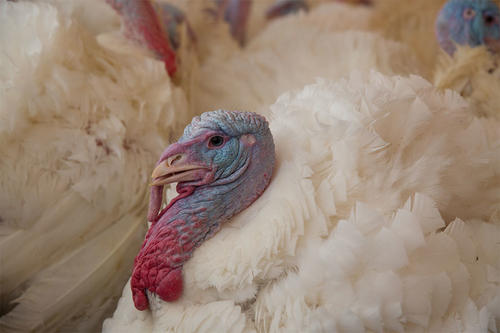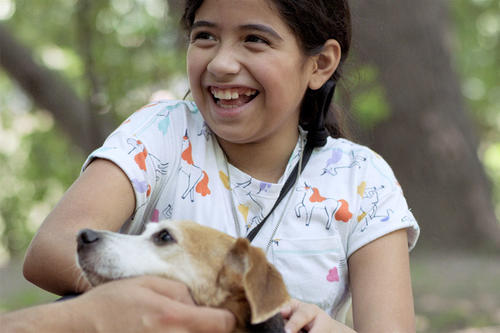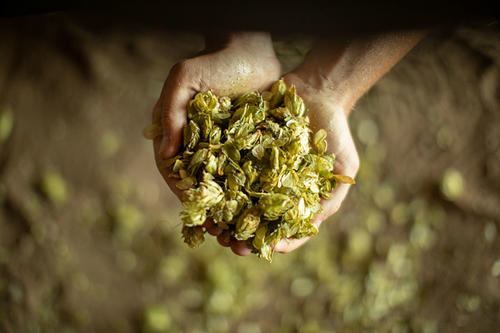Making the healthy choice the easy choice
A small community is making big changes in its food environment to improve the health of future generations.
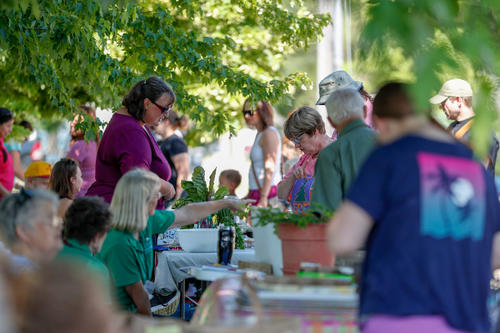
In an impromptu kitchen inside the public library in the west central community of Morris, Minnesota, food sizzles in a frying pan while a boy of about 7 pokes at his plate, separating the “good” foods from the “bad.” The mushrooms, notably, have migrated on the plate to a spot all their own, and that is where they will stay (He’s never actually tried mushrooms, but is convinced he doesn’t like them).
Despite being a library, the place is anything but quiet. Children are busy slicing, dicing, and smashing vegetables on cutting boards with plastic knives they’ve been provided through a program called Taste Buds, which teaches kids about cooking and nutrition through hands-on experience.
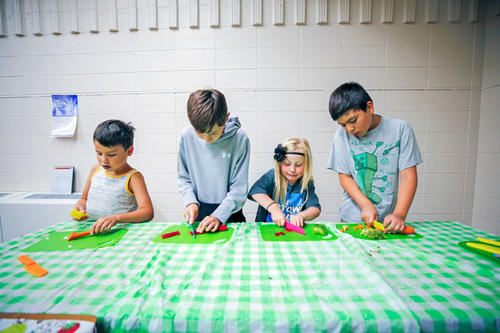
Children at a Taste Buds event get hands-on experience slicing and dicing ingredients for a stir-fry.
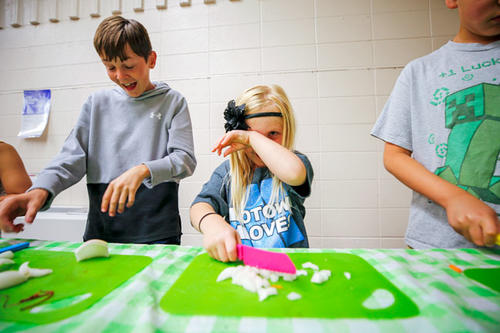
A child has her first experience slicing an eye-watering onion.
Just outside on the library lawn, the Morris Area Farmers Market bustles with fresh food and goods grown or produced locally by the residents of Stevens County.
Both Taste Buds and the farmers market, as well as a number of other programs, are part of the Morris Healthy Eating Initiative, which began 10 years ago with a simple question: “What if the healthy choice was the easy choice?”
National problem, local solution
Today nearly 300 of west central Minnesota’s 10,000 farm families sell food directly to consumers, with sales nearing $1 million annually. While this is significant, west central Minnesota residents spend more than $350 million buying food each year—food raised largely outside of this rural farming region.
If just 15 percent of the region’s healthy food came from west central Minnesota farmers, the shift would create $28 million in new local income.
About half of American adults (more than 100 million) have one or more preventable chronic diseases, many of which are related to unhealthy eating and a lack of physical activity. Meanwhile, obesity affects almost one in five children, and one in four children from lower socioeconomic groups.
And while the norm is to fault the individual, national research shows that comprehensive changes in a food environment can increase healthy eating for a whole community. In rural areas, especially, Americans are four times less likely to have access to a healthy food retailer than those who live in urban areas.
In Stevens County—home to some of the richest agricultural land in the state—the potential seemed limitless.
What if the healthy choice was the easy choice?
Mary Jo Forbord, a registered dietitian and coordinator of the Morris Healthy Eating Initiative at the University of Minnesota Morris, started building an answer to that question. Working closely with citizens and organizations within Morris and Stevens County (like SNAP Ed, Stevens County Food Shelf, farmers, and the library), she created educational programs about nutrition and helped make fresh fruits and vegetables and other healthy foods more accessible and affordable.
Forbord says that the initiative is fostering a community dialogue on the benefits of eating healthier, expanding gardening and farmers markets, and educating residents (especially kids) in how to prepare healthier food.
“I’ve been told that no matter what the question is, my answer is always ‘food,’” says Forbord, who is also an organic farmer.
“By organizing and building a welcoming and vibrant market, we are succeeding in encouraging more farmers to become vendors and more community members to become customers, all of which strengthens the local economy,” says Forbord.
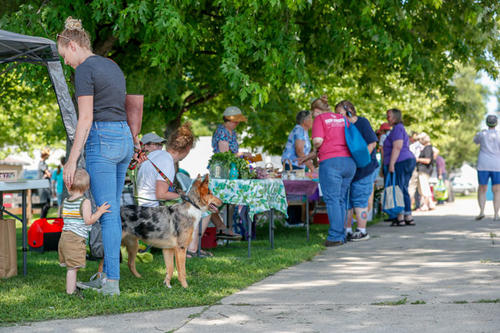
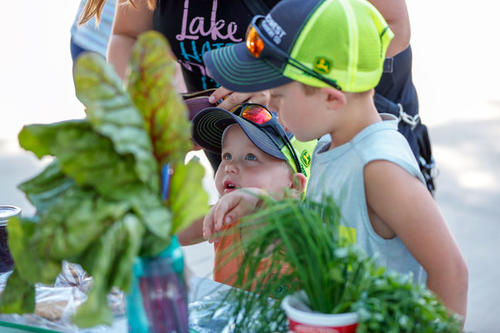
But the real payoff may be in future generations: by pairing kids with University students in all things food, kids are getting interested in food and their own health, says Forbord.
Growing a generation of healthy eaters
Back inside the library, U of M Morris student Erin Kiyukanpi is demonstrating a stir-fry—mushrooms included—as part of today’s Taste Buds programming. While kids get misty-eyed cutting onions (many for the first time), Kiyukanpi is explaining how carrots, peppers, and other vegetables taste and why they might add them to the stir-fry.
Kiyukanpi, a member of the Sisseton Wahpeton Oyate tribe, has been cooking for years. He’s a nontraditional student with plenty of work experience under his belt, especially in food service. Most recently he was food manager at a K-12 tribal school. Today, his own son, 8, is here watching the demonstrations with other kids.
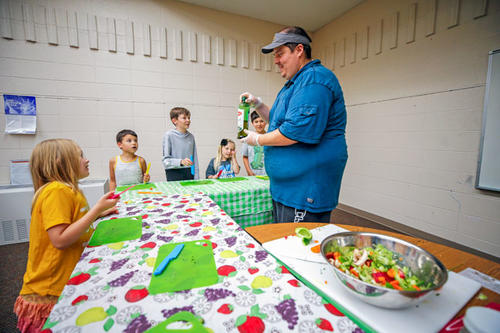
Erin Kiyukanpi demonstrates a stir-fry for kids at Taste Buds, a program that teaches children about food, nutrition, and cooking.
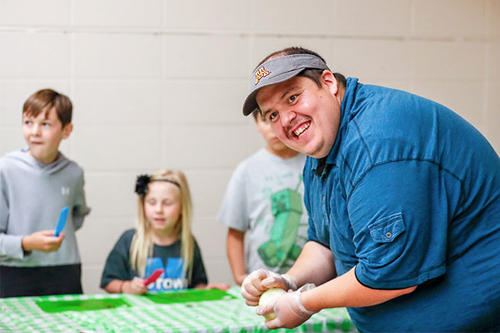
Student Erin Kiyukanpi showing kids how to cook the veggies they chopped
Kiyukanpi, a Native American and Indigenous Studies major with a minor in sustainability leadership, points out that “Kiyukanpi” in Dakota means “makes room for him/them,” and that, essentially, is how he sees his role here: He excels at making the kids feel comfortable.
“Kids ask a lot of questions and try a lot of foods they wouldn’t normally try. When you get on their level, take a knee with them and explain things—the benefits of the plant and where it comes from, the different tastes ... they appreciate that and are open to trying new things,” says Kiyukanpi, who after graduation hopes to put his experience to work in the tribal community.
“Some kids come and make the food but won’t try anything … but they’re here, putting their hands in it—getting that exposure. And I think they realize that cooking can be fun—interesting and colorful and easy,” he says.
On the other hand, says Forbord, “We're finding that a lot of the time kids will lead the way … and their parents are standing back saying, ‘oh, they won’t eat that, don’t give them too much’ and the kids are going, ‘Hey, I helped make that!’”
Nearby, Morris student Esmira Alieva helps a little girl of about 3 tuck in a new recipe and add a sticker to a recipe book each child keeps. Stickers seem to be a key recipe book ingredient, especially for the smaller kids.
Every week it’s a new recipe: strawberry salsa, garlic-scape pesto, and this week, stir-fry, says Alieva. As part of the program, she and half a dozen other students work with the children on topics from cooking to nutrition and gardening.
“You have to make it exciting for them just to get them to even touch the mushrooms,” says Alieva. For many, the very presence of the college students is enough excitement.
“The kids love the University students—they hang on their every word. And if the college students eat that, and they think it’s good ... the kids are in. It’s really quite a wondrous thing to see,” says Forbord
But the program’s effectiveness is also aided because the children are invested: They’ve actually grown many of the vegetables they are using in gardens of their own—little plots of land, each just a few square feet that they can call their own, provided by the University of Minnesota’s West Central Research and Outreach Center. Each child plants the same things (radishes, lettuce, beans, strawberries, and more), and every week they come to harvest.
“They harvested radishes last week,” says Forbord. “You talk about excitement—many of them had never pulled anything out of the ground before—and they were going to eat them no matter what, because they grew them,” she says.
Forbord says that familiarizing kids with a variety of fruits and vegetables when they are young will help them become better eaters and healthier people in the future.
“For so long, people have lamented, oh, nobody cooks anymore, nobody knows what to do with vegetables,” says Forbord.
She and the community of Morris are helping change that by growing the next generation of healthy eaters.
- Categories:
- Health
Meet the people behind the story
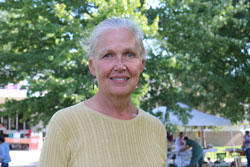
Mary Jo Forbord
Registered dietitian/nutritionist & Morris Healthy Eating coordinator, University of Minnesota Morris

